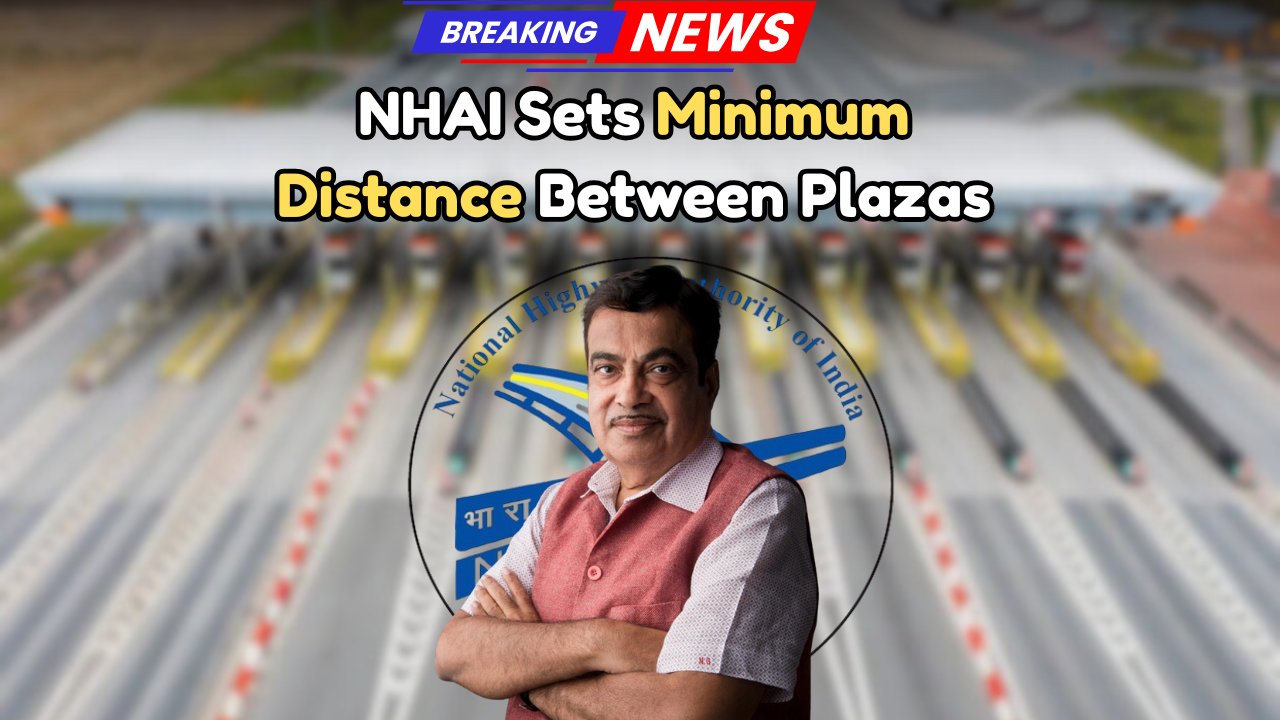New Toll Rule : The National Highways Authority of India (NHAI) has officially introduced a major reform in toll collection systems across the country. As part of this policy, a uniform minimum distance between two toll plazas will now be enforced nationwide. The rule aims to eliminate irregular tolling distances, reduce travel costs, and provide transparency for road users. This step is part of the broader initiative to ensure fair toll collection and enhance road user convenience on India’s expanding highway network.
What is the New Toll Rule?
The new policy by NHAI mandates that the minimum distance between any two toll plazas on national highways must be at least 60 kilometers. This rule will help prevent excessive toll charges for short distances and eliminate the presence of closely placed toll booths that inconvenience travelers.
Key Highlights of the Rule:
- Minimum gap of 60 km between consecutive toll plazas.
- Applicable to all national highways and expressways.
- Aims to standardize toll operations and reduce commuter complaints.
- State-specific exceptions only in rare or justified cases.
- Applies to both existing and upcoming toll plazas.
Why Was This Policy Introduced?
Over the years, drivers and transporters across India have raised concerns about the unfair placement of toll plazas, some of which were barely 30-40 km apart. This led to higher cumulative toll costs, especially for commercial vehicles. With the new rule, the government intends to:
- Streamline toll collection.
- Offer transparency and fairness to motorists.
- Minimize economic loss from frequent toll payments.
- Improve efficiency and planning in future infrastructure projects.
New Toll Distance Rule vs Old Practice
The following table compares the key differences between the old toll system and the new policy now being implemented:
| Feature | Old Rule (Pre-2025) | New Rule (2025 Onward) |
|---|---|---|
| Minimum Distance Between Tolls | Varied (30-50 km in cases) | Strictly 60 km |
| Applicability | Case-specific | Uniform across all highways |
| Oversight | Regional discretion | Centralized NHAI monitoring |
| Motorist Grievances | Frequent complaints | Expected reduction in complaints |
| Exemptions | Loosely enforced | Stringent with valid justifications |
| Impact on Travel Cost | Higher toll accumulation | Reduced frequency of charges |
| Implementation Timeline | Gradual & partial | Nationwide immediate rollout |
| Impact on Planning | Unpredictable | More structured infrastructure |
How Will This Rule Affect Travelers?
For daily commuters, transporters, and long-distance travelers, this rule brings relief and predictability in toll charges. The reduced number of toll plazas per stretch will:
- Lower the cumulative toll paid during long journeys.
- Reduce time lost at frequent toll stops.
- Cut down fuel wastage during toll queues.
- Create a smoother travel experience on highways.
Expected Benefits:
- Increased savings for commercial transporters.
- Better compliance and trust among motorists.
- Improved road logistics for cargo and goods movement.
- Easier monitoring and digital toll enforcement.
Timeline and Implementation Details
The NHAI has announced the following timeline and rollout procedure for the new toll plaza distance policy:
| Phase | Timeline | Scope | Action Taken |
|---|---|---|---|
| Phase 1 | May-June 2025 | Survey of existing tolls | Identify tolls placed <60 km apart |
| Phase 2 | July-August 2025 | Removal/Relocation of tolls | Begin re-alignment work |
| Phase 3 | September 2025 | Enforcement of new rule | Implement toll distance regulations |
| National Launch | October 1, 2025 | Full policy enforcement | Policy becomes mandatory nationwide |
| Exception Handling | Ongoing | Hilly/Urban terrain considerations | Special cases reviewed by NHAI |
| Monitoring | From October 2025 | Toll compliance and public feedback | Via NHAI helpline and audits |
| Review Period | Every 6 Months | Policy effectiveness check | Reports to be submitted to MoRTH |
What Happens If Rules Are Violated?
The NHAI has empowered itself to penalize highway operators or state authorities who fail to comply with the minimum 60 km distance rule. Some of the enforcement actions include:
- Cancellation of toll operating licenses.
- Imposition of fines or penalties.
- Order to relocate or shut down the toll plaza.
- Public grievance redressal mechanisms for reporting violations.
Travelers’ FAQs on the New Toll Rule
| Question | Answer |
|---|---|
| Is this rule valid for state highways too? | No, it applies only to national highways under NHAI jurisdiction. |
| What if two tolls are already under 60 km? | NHAI will review and relocate one of them within the next few months. |
| Will toll charges reduce after this change? | Indirectly yes, as fewer tolls mean less cumulative toll expense. |
| Are there exceptions for hilly/urban areas? | Yes, but only after review and approval by the central authority. |
| Can users complain about short-distance tolls? | Yes, via the official NHAI grievance portal or helpline. |
| When will the full rule be enforced? | By October 1, 2025, nationwide enforcement will be completed. |
| Will FASTag systems also follow this rule? | Yes, FASTag tolls will also comply with the new 60 km guideline. |
The NHAI’s new minimum toll distance policy is a significant step toward improving the fairness, transparency, and usability of India’s national highway system. With consistent 60 km spacing, travelers can now expect a smoother journey, less financial burden, and fewer stops. It also reflects the government’s commitment to better infrastructure governance and public-friendly transportation reforms.
